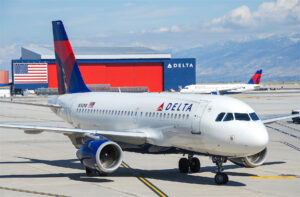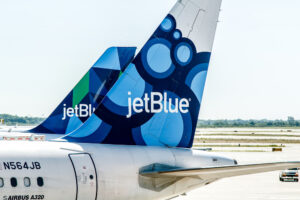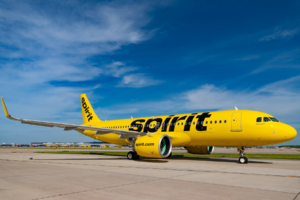Last edit by: WineCountryUA
This is an archive thread, the active thread is United Pilot Q & A thread
United Pilot Q & A {Archive}
#6916
FlyerTalk Evangelist
Join Date: May 2007
Location: Houston
Programs: UA Plat, Marriott Gold
Posts: 12,700
2) You can air start most aircraft in commercial service, including up to 777/A380; much like the famous quote in Jaws, it's just a matter of "we're gonna need a bigger boat airstarter". Notable exception would be the 787 (electric start) and maybe the 747-8 (not sure if they backported an air start to it).
3) Yes, if you keep up the airspeed so they're windmilling.
4) There will be operational limitations, like prohibiting overwater flight, to mitigate the safety risks of an inop APU.
3) Yes, if you keep up the airspeed so they're windmilling.
4) There will be operational limitations, like prohibiting overwater flight, to mitigate the safety risks of an inop APU.
#6918
Join Date: Mar 2014
Posts: 383
That's some bravery performed by the ground worker right there.
#6919
Join Date: Feb 2002
Location: BNA
Programs: HH Gold. (Former) UA PP, DL PM, PC Plat
Posts: 8,206
An inoperative APU will be routed to maintenance as soon as possible as it is quit disruptive to the operation due to the extra time the air starts take. The MEL would specify the maximum number of days that the aircraft can be operated before the repair is made so indefinitely is not an option.
2.) Are air starts performed on all aircraft types, or is there a correlation to a regional jet's wear and tear and not having a functional APU? Can "the huffer" start an engine on a larger aircraft like a 777?
3.) How often do planes actually fly without a working APU? Let's say both engines are shut down mid-flight for some reason (not likely, obviously) -- could those engines be restarted mid air without an APU?
You don't need the APU to start an engine in the air because the airflow through the engine provides the needed rotation.
4.) Are there any safety risks mid-flight of flying with no APU?
The real issue with inop APU is trying to maintain cabin temperature. They have to disconnect the ground pre-conditioned air (PCA) before we can do the air start. That leaves the cabin without any conditioned air until an engine is started. If there are problems with the air cart you're stuck without air while they try to fix it or find another air cart. Meanwhile, they can't reattached the PCA if the jetbridge has been retracted. If the outside air temperature is much above 50, or so, the cabin will get uncomfortably warm.
Once you have started one engine, you start the second engine using air pressure from the operating engine. You can't do that in the gate area because you have to increase thrust on the operating engine to get enough air pressure and that jet blast would create a hazard for the workers and equipment around the gates.
That's a different problem. That is manually operating the start valve which is necessary when the start value actuating system fails. You have air pressure from the APU but the start value doesn't open electronically. I can't remember ever having to do one of these on a line trip.
#6920
FlyerTalk Evangelist
Join Date: Nov 2014
Location: MSP
Programs: DL PM, UA Gold, WN, Global Entry; +others wherever miles/points are found
Posts: 14,496
The APU is not normally used inflight though it is required as a backup for ETOPS and overwater flights. An aircraft without a working APU would not be dispatched on such flights. You also couldn't do bleeds-off takeoffs or landings so there might be a performance penalty in hot/high conditions.
The real issue with inop APU is trying to maintain cabin temperature. They have to disconnect the ground pre-conditioned air (PCA) before we can do the air start. That leaves the cabin without any conditioned air until an engine is started. If there are problems with the air cart you're stuck without air while they try to fix it or find another air cart. Meanwhile, they can't reattached the PCA if the jetbridge has been retracted. If the outside air temperature is much above 50, or so, the cabin will get uncomfortably warm.
Once you have started one engine, you start the second engine using air pressure from the operating engine. You can't do that in the gate area because you have to increase thrust on the operating engine to get enough air pressure and that jet blast would create a hazard for the workers and equipment around the gates.
The real issue with inop APU is trying to maintain cabin temperature. They have to disconnect the ground pre-conditioned air (PCA) before we can do the air start. That leaves the cabin without any conditioned air until an engine is started. If there are problems with the air cart you're stuck without air while they try to fix it or find another air cart. Meanwhile, they can't reattached the PCA if the jetbridge has been retracted. If the outside air temperature is much above 50, or so, the cabin will get uncomfortably warm.
Once you have started one engine, you start the second engine using air pressure from the operating engine. You can't do that in the gate area because you have to increase thrust on the operating engine to get enough air pressure and that jet blast would create a hazard for the workers and equipment around the gates.
Could that have been something else, given we were allowed to fly overwater? Or does it have to do with the 767s having a RAT?
#6921
Join Date: Feb 2002
Location: BNA
Programs: HH Gold. (Former) UA PP, DL PM, PC Plat
Posts: 8,206
The 767 RAT is only used if both engines fail. It provides hydraulic pressure to operate the flight controls. (I flew the 757/767 briefly at a previous airline). Here's a picture of a deployed 767 RAT in the maintenance hangar. Not a UAL airplane or hangar but it would look the same.

#6922

Join Date: Aug 2011
Location: BWI
Programs: UA 1MM & 1K, Marriott Titanium, Hilton Diamond
Posts: 255
They are rare enough that most of the ramp workers have never done a real one which adds to the time it takes to get it done. They've been trained in the procedure but it never seems to go quickly and smoothly. You also tend to find air carts that won't put out enough pressure. They run fine until you put the load of a starting-engine on them but then they can't maintain the required pressure.
At least we didn't have to worry about cabin temperature. Despite the evening temperature being 50F every day they still managed to make every aircraft feel like 90F nearly every time at BOG so it didn't actually get any hotter while we were hoping they'd get the engine started!
#6923
Join Date: Jun 2014
Programs: UA MM
Posts: 4,150
#6924
Join Date: Aug 2010
Location: KEWR
Programs: Marriott Platinum
Posts: 794
That's interesting - I was flying out of BOG a few years ago on a 757 with inop APU and there was some trouble in finding two carts needed to start the engine, and then some doubt as to whether the ones they found would put out enough air pressure to get the engine started.
At least we didn't have to worry about cabin temperature. Despite the evening temperature being 50F every day they still managed to make every aircraft feel like 90F nearly every time at BOG so it didn't actually get any hotter while we were hoping they'd get the engine started!
At least we didn't have to worry about cabin temperature. Despite the evening temperature being 50F every day they still managed to make every aircraft feel like 90F nearly every time at BOG so it didn't actually get any hotter while we were hoping they'd get the engine started!
South or Central America, no way!
The resources and the quality of maintenance support staff/equipment is so limited you can easily get stuck there. The availability or reliability of huffer carts is a great example of that.
Last edited by clubord; Feb 15, 2022 at 10:02 pm
#6925
Join Date: Aug 2008
Location: DCA, IAD (not BWI if I can help it)
Programs: UA 1MM 1K, Marriott Gold, Hyatt Explorist, status-free on AA, AS, B6, DL, WN, Amtrak, etc.
Posts: 1,481
I had a flight out of DCA in January delayed because first our 737 had an inop APU, then the UA cart was broken, then they had to borrow one from DL, then the snow picked up (here I will gloss over the next several hours spent in the UC upstairs), and when the rampers finally connected the borrowed cart and fired it up, it spat out enough black smoke to make me wonder if that thing ran on coal. Is that normal?
(That did get the engine to turn, allowing one of the only post-8 a.m. departures out of National that day.)
(That did get the engine to turn, allowing one of the only post-8 a.m. departures out of National that day.)
#6926
FlyerTalk Evangelist
Join Date: Apr 2006
Location: Los Angeles, California
Programs: United, American, Delta, Hyatt, Hilton, Hertz, Marriott
Posts: 14,839
What happened to the navigators and flight engineers
I�ve been watching YouTube documentaries on incidents over the years. It�s impressive how safe flying has become. One thing that intrigued me is the disappearance of navigators in the 60s and 70s and flight engineers in the 70s and 80s. Technology made them redundant. What happened to them? For United lag them all off as aircraft requiring them were retired? Were they retrained for other roles?
One follow up question: as aircraft get more sophisticated, what are your thoughts on pilots being made redundant next?
One follow up question: as aircraft get more sophisticated, what are your thoughts on pilots being made redundant next?
#6927
Join Date: Feb 2002
Location: BNA
Programs: HH Gold. (Former) UA PP, DL PM, PC Plat
Posts: 8,206
I�ve been watching YouTube documentaries on incidents over the years. It�s impressive how safe flying has become. One thing that intrigued me is the disappearance of navigators in the 60s and 70s and flight engineers in the 70s and 80s. Technology made them redundant. What happened to them? For United lag them all off as aircraft requiring them were retired? Were they retrained for other roles?
One follow up question: as aircraft get more sophisticated, what are your thoughts on pilots being made redundant next?
#6928
FlyerTalk Evangelist
Join Date: Apr 2006
Location: Los Angeles, California
Programs: United, American, Delta, Hyatt, Hilton, Hertz, Marriott
Posts: 14,839
Navigators were well before my time. Most of the professional flight engineers aged out as fewer aircraft needed them. Some made the transition to become pilots but that took a significant amount of effort on their part. Most didn't. Airlines stopped hiring professional flight engineers years before the airplanes went away. They started hiring pilots and having them serve as Second Officers, doing the FE duties, until their seniority allowed an upgrade to a pilot seat. This reduced the number of PFEs still flying when the airplanes were retired.
We are not even close to that point.
We are not even close to that point.
#6929
FlyerTalk Evangelist
Join Date: Aug 2015
Posts: 11,512
I�ve been watching YouTube documentaries on incidents over the years. It�s impressive how safe flying has become. One thing that intrigued me is the disappearance of navigators in the 60s and 70s and flight engineers in the 70s and 80s. Technology made them redundant. What happened to them? For United lag them all off as aircraft requiring them were retired? Were they retrained for other roles?
One follow up question: as aircraft get more sophisticated, what are your thoughts on pilots being made redundant next?
One follow up question: as aircraft get more sophisticated, what are your thoughts on pilots being made redundant next?
 And personally, as someone who likes to have successful takeoffs and landings, I'm quite happy to continue chipping in to pilots' pay!
And personally, as someone who likes to have successful takeoffs and landings, I'm quite happy to continue chipping in to pilots' pay! 
#6930
FlyerTalk Evangelist
Join Date: Mar 2010
Location: DAY
Programs: UA 1K 1MM; Marriott LT Titanium; Amex MR; Chase UR; Hertz PC; Global Entry
Posts: 10,200























